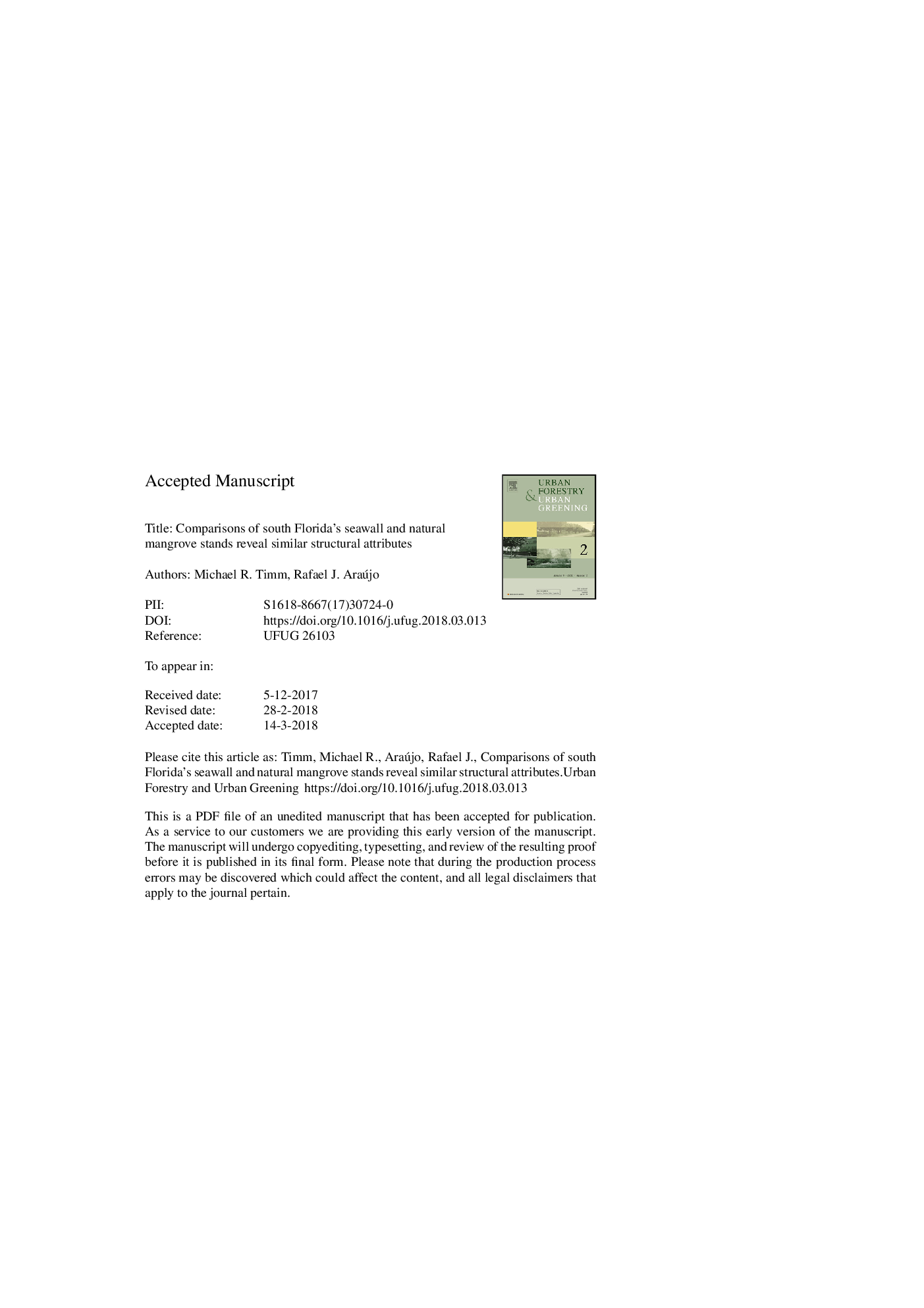| کد مقاله | کد نشریه | سال انتشار | مقاله انگلیسی | نسخه تمام متن |
|---|---|---|---|---|
| 6549173 | 1421858 | 2018 | 40 صفحه PDF | دانلود رایگان |
عنوان انگلیسی مقاله ISI
Comparisons of south Florida's seawall and natural mangrove stands reveal similar structural attributes
ترجمه فارسی عنوان
مقادیری از سائو فلوریدای جنوبی و مهاجران طبیعی منبعی نشان می دهد ویژگی های ساختاری مشابه
دانلود مقاله + سفارش ترجمه
دانلود مقاله ISI انگلیسی
رایگان برای ایرانیان
کلمات کلیدی
موضوعات مرتبط
علوم زیستی و بیوفناوری
علوم کشاورزی و بیولوژیک
جنگلداری
چکیده انگلیسی
Mangroves are an exceptional group of facultative halophytic trees within tropical and subtropical regions whose structural complexity is derived from the interplay of biotic and abiotic inputs, or energy signatures, which serve as a proxy for their ecosystem function. Mangroves were originally classified into six distinct community types existing in natural landscapes; absent of artificial structures or urban influence. Advancements in the use of mangroves as green infrastructure have resulted in a growing interest in understanding the ecological importance of mangrove stands associated with artificial structures. The question remains as to whether urban mangroves growing alongside hardened barriers (seawalls) differ from the community types originally described, and if so, to what extent does the urban landscape affect their structure and associated function. In order to answer this question, we compared seawall and natural mangrove stands with respect to their relative species contributions to stand complexity, tree diameter, height, leaf size, root density, diameter and tree height size classes, complexity index, and mean stand diameter. Results of this investigation revealed few differences between the structural characteristics of seawall and natural mangrove stands in south Florida and the Neotropical region. These findings bolster the importance of urbanized mangroves, their ecological function, and support the need to incorporate mangroves as part of the urban landscape.
ناشر
Database: Elsevier - ScienceDirect (ساینس دایرکت)
Journal: Urban Forestry & Urban Greening - Volume 32, May 2018, Pages 7-20
Journal: Urban Forestry & Urban Greening - Volume 32, May 2018, Pages 7-20
نویسندگان
Michael R. Timm, Rafael J. Araújo,
